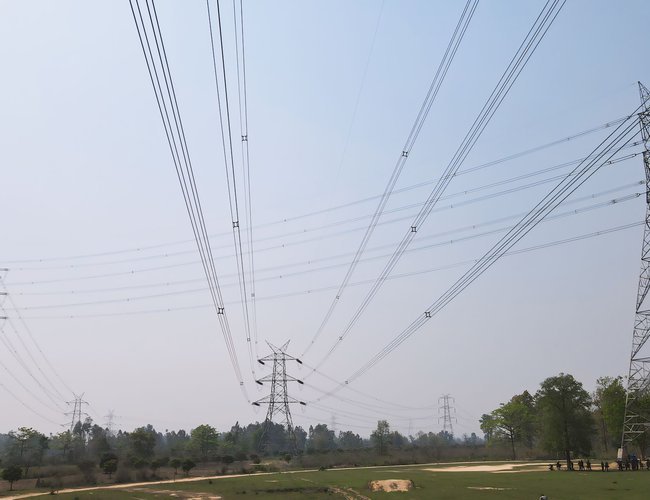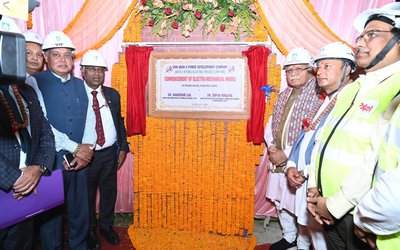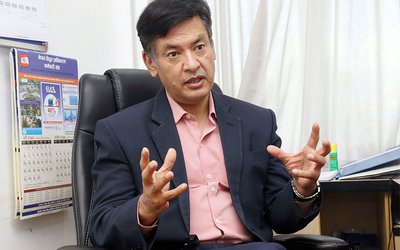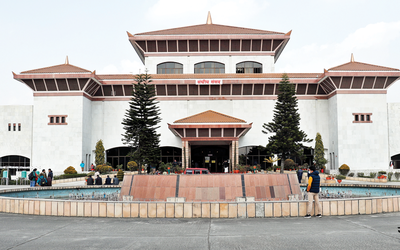
The narrative that India lacks interest in importing electricity from Nepal and that Nepal cannot become a net exporter has long been ingrained in the minds of urban elites.
The deepening political understanding between Nepal and India, along with the managerial expertise of NEA, has proven this belief wrong. With the approval of regulations by the Indian cabinet to import 10,000 MW of electricity from Nepal, the energy trade between the two countries is progressing positively.
Consequently, Nepal earned Rs 16.93 billion by exporting electricity to India in the last fiscal year 2023/24, generating income for NEA.
In just seven years, NEA's leadership under MD Ghising has transformed Nepal from enduring 16-hour long load-shedding to becoming a net exporter of electricity.
This remarkable change was achieved through the expansion of transmission lines, improvement of generation and distribution systems, and the establishment of cross-border transmission lines.
NEA now sells surplus power at competitive rates to the Indian Energy Exchange and NTPC Vidyut Vypar Nigam Limited, marking a significant shift in Nepal's energy landscape.
The initiation of exporting electricity was credited to Prime Minister Sher Bahadur Deuba. After Deuba's trip to India, Prime Minister Modi approved the import of Nepal's excess electricity. The agreement between Nepal and India regarding the export of Nepalese electricity to India was signed during Prime Minister Pushpa Kamal Dahal Prachanda's visit. With KP Sharma Oli currently serving as Nepal's prime minister, the future progress of the electricity trade between Nepal and India is yet to be observed.

In the last fiscal year, Nepal imported power worth Rs 16.81 billion, as reported by NEA. The country imported around 183 billion units of electricity from India to meet the high demand for electricity during the dry season, when power production from hydropower projects decreases due to reduced water flow in rivers and rivulets.
The average rate of power imported during the winter season is Rs 9.17 per unit. Additionally, Nepal exported power worth more than Rs 122.3 million to India compared to the imports in the last fiscal year. In the fiscal year 2022/23, Nepal imported power worth Rs 19.44 billion and exported electricity worth Rs 10.45 billion.
The Managing Director of NEA, Kulman Ghising, emphasized the necessity of importing power to meet domestic demands during the winter season for the next few years.
Simultaneously, he mentioned that the volume of exports will also witness an increase. NEA has been selling surplus electricity to the Indian company NTPC Vidyut Vyar Nigam Ltd-NVVN at a competitive rate in the day-ahead and real-time market of Indian Energy Exchange (IX) as per the mid-term electricity agreement.
NVN, in turn, sells this electricity in the state of Haryana at an average rate of Rs. 8.72 per unit. NEA reported importing electricity worth Rs 16.81 billion last year due to decreased generation from river-flowing hydropower plants during the dry season.
To meet the demand, 1.83 billion units of electricity were imported from India, with an average rate of Rs. 9.17 per unit during the winter season.
In the previous year, the amount of electricity exported to India exceeded the amount imported. A total of 100.91 million units more electricity was exported based on energy. Within three years of entering the Indian competitive market, Nepal has transitioned into a net exporter of electricity, with higher export volumes than imports.
Ghising, the Managing Director of NEA, stated that despite the need to import electricity to meet domestic demand during the winter months in the coming years, the volume of exports will continue to rise. He also mentioned that until six/seven years ago, Nepal was solely an importer of electricity.
However, with the commencement of electricity exports to the competitive Indian market three years ago, Nepal became a net importer with more imports than exports. The situation has now shifted from being a net importer to an exporter, marking a significant achievement and milestone for the energy sector, even if the net export amount is relatively small.
MD Ghising highlighted that the adoption of electric vehicles and induction stoves in the nation has led to a decrease in the import of petroleum products, thanks to the ample availability of electricity. He also mentioned that the surge in electricity exports has played a role in narrowing the trade deficit between Nepal and India, positively impacting the country's foreign exchange reserves.
Nepal officially joined India's Energy Exchange Day Ahead Market on May 1, 2021. Initially permitted to import electricity, Nepal was later granted exporter status on November 3, 2021. At present, Nepal is selling approximately 700 MW of electricity daily to India across various markets such as medium-term, day-ahead, and real-time. The Nepal Electricity Authority (NEA) has been authorized to export 690 megawatts of electricity generated by 16 different projects.
MD Ghising stated that, as per the mid-term agreement, an extra 400 megawatts of electricity is currently undergoing approval for export. "We are currently seeking authorization from the appropriate authorities in India to export an additional 400 megawatts of electricity for distribution to the states of Haryana and Bihar.
An agreement with Bangladesh will also be finalized soon, allowing us to export 40 megawatts starting this year," MD Ghising mentioned. He also highlighted that electricity generated by private sector hydropower projects under the 'take or sell' conditions is not wasted unless there is an issue with the transmission line.
MD Ghising's efforts have transformed Nepal from a net importer to a net-exporter, demonstrating that India is a dependable and feasible market for Nepalese electricity. Despite being delayed by political turmoil in Bangladesh, Nepal is set to commence the export of 50 MW electricity to Bangladesh following the signing of a tripartite agreement at the ministerial level between Nepal, India, and Bangladesh.

Keshab Poudel
Poudel is the editor of New Spotlight Magazine.
- KUL MAN GHISING: Bowing Down To The People
- Apr 13, 2025
- POLITICAL VIOLENCE: Culture of Impunity
- Apr 11, 2025
- PM OLI MEETS PM MODI: No Progress
- Apr 09, 2025
- PM OLI’S THAILAND VISIT: Flip Flop
- Apr 08, 2025
- FM Dr. Deuba’s India Visit: Mission Aborted
- Mar 26, 2025















